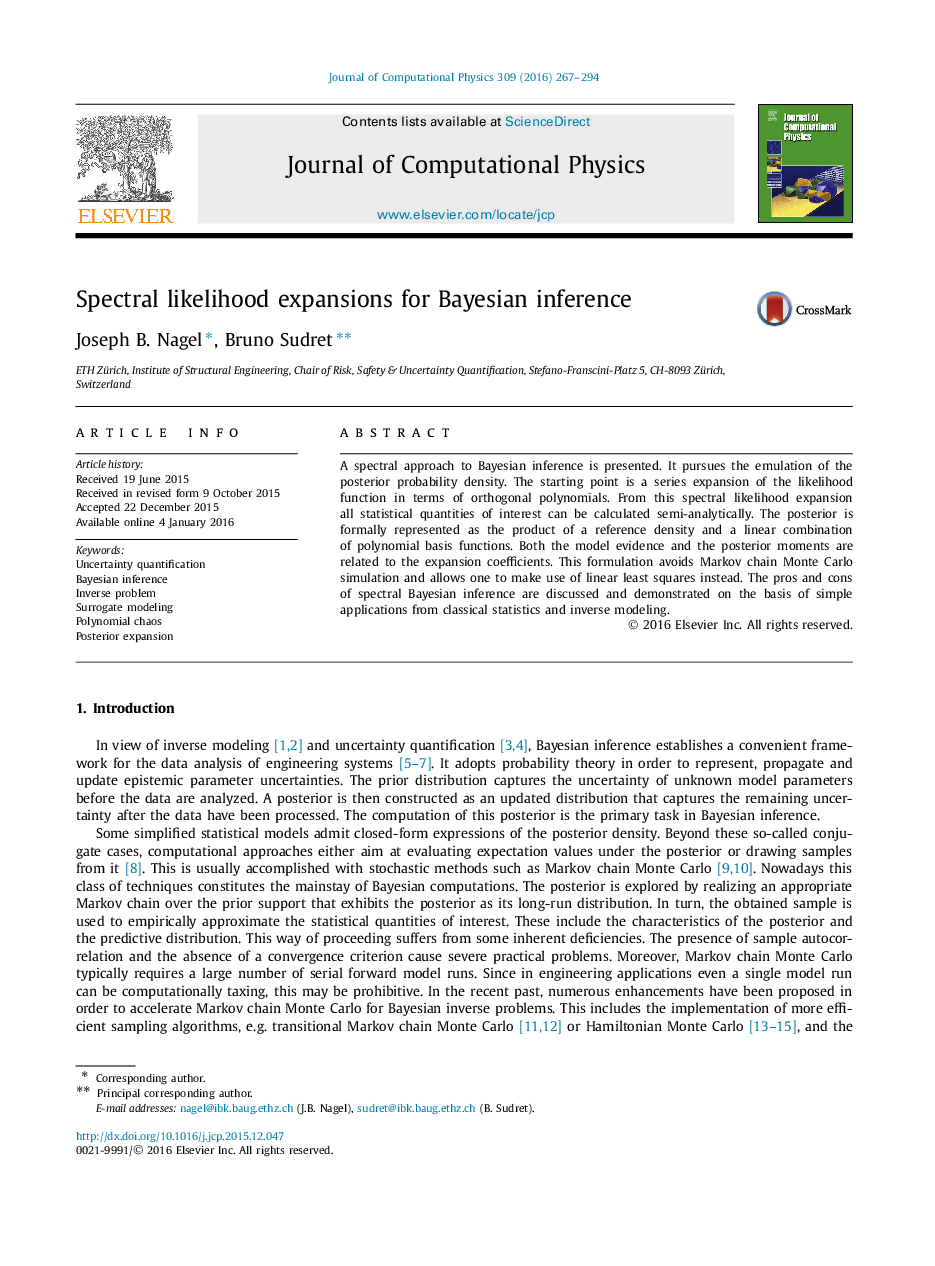| Article ID | Journal | Published Year | Pages | File Type |
|---|---|---|---|---|
| 6930533 | Journal of Computational Physics | 2016 | 28 Pages |
Abstract
A spectral approach to Bayesian inference is presented. It pursues the emulation of the posterior probability density. The starting point is a series expansion of the likelihood function in terms of orthogonal polynomials. From this spectral likelihood expansion all statistical quantities of interest can be calculated semi-analytically. The posterior is formally represented as the product of a reference density and a linear combination of polynomial basis functions. Both the model evidence and the posterior moments are related to the expansion coefficients. This formulation avoids Markov chain Monte Carlo simulation and allows one to make use of linear least squares instead. The pros and cons of spectral Bayesian inference are discussed and demonstrated on the basis of simple applications from classical statistics and inverse modeling.
Keywords
Related Topics
Physical Sciences and Engineering
Computer Science
Computer Science Applications
Authors
Joseph B. Nagel, Bruno Sudret,
